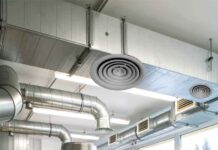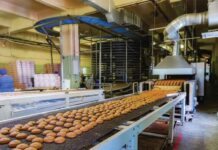
In the intricate world of Heating, Ventilation, and Air Conditioning (HVAC), refrigerants are the unsung heroes. These specialised compounds are the very essence of how cooling and heating (through heat pumps) are achieved, silently working within closed loops to transfer thermal energy.
They are the core medium that absorbs heat from one area and releases it into another, making comfortable indoor environments possible across homes, offices, and large commercial spaces.
The Fundamental Role of Refrigerants
At its heart, the refrigeration cycle involves a refrigerant undergoing phase changes – from liquid to gas and back again. This process leverages the principle that when a liquid evaporates, it absorbs heat from its surroundings, and when a gas condenses, it releases heat.
In an HVAC system, the refrigerant continuously cycles through an evaporator (where it absorbs heat from the indoor air), a compressor (which increases its pressure and temperature), a condenser (where it releases heat to the outdoor air), and an expansion valve (which reduces its pressure, allowing it to cool and return to a liquid state). This continuous loop is what enables the cooling or heating effect.
A Brief History: From Harmful to Environmentally Conscious
The journey of refrigerants has been marked by significant evolution, largely driven by environmental concerns. Early refrigerants like Chlorofluorocarbons (CFCs), such as R11 and R12, were highly effective but discovered to be severe Ozone-Depleting Substances (ODS). Their widespread use led to the depletion of the earth’s protective ozone layer.
Following CFCs, Hydrochlorofluorocarbons (HCFCs), like the ubiquitous R22, became prevalent. While less damaging to the ozone layer than CFCs, HCFCs still possessed a significant Ozone Depletion Potential (ODP) and a high Global Warming Potential (GWP), contributing to climate change. Consequently, R22 is also undergoing a global phase-out, pushing the industry towards more environmentally friendly alternatives.
The Current Landscape: HFCs and Their Applications
Today, Hydrofluorocarbons (HFCs) are among the most common refrigerants. They contain no chlorine, giving them zero ODP, which was a major step forward. However, many HFCs, while not harming the ozone layer, still have a high GWP, meaning they contribute to global warming if released into the atmosphere.
Two prominent HFCs widely used in HVAC, including in the DX (Direct Expansion) coils of Air Handling Units (AHUs), are:
- R410a: This blend of HFCs operates at higher pressures than R22, requiring stronger components in HVAC systems. It’s known for its excellent heat transfer properties and energy efficiency. R410a is a common choice for residential and light commercial air conditioning systems, including the DX coils found in AHUs.
- R134a: A single-component HFC, R134a is often used in larger commercial chillers, automotive air conditioning, and also in specific DX coil applications within AHUs. It operates at lower pressures compared to R410a and is known for its stability.
Companies like Brightflow Engineers Pvt. Ltd. manufacture advanced Air Handling Units that are designed to be fully compatible with these modern refrigerants, including R410a and R134a, ensuring efficient and reliable performance in diverse applications.
The Road Ahead: Low GWP Alternatives
The HVAC industry is now moving towards refrigerants with ultra-low GWP to further mitigate climate change. This includes:
- Hydrofluoroolefins (HFOs): Such as R1234yf and R1234ze, these refrigerants have GWPs comparable to CO2, making them highly sustainable choices.
- Natural Refrigerants: Substances like Carbon Dioxide (CO2 / R744), Ammonia (R717), and Hydrocarbons (R290 – Propane, R600a – Isobutane) are gaining traction. While they have excellent environmental profiles and thermodynamic properties, they often come with specific safety considerations (e.g., flammability for hydrocarbons, toxicity for ammonia, high pressure for CO2) that require specialised system designs and handling.
Environmental Responsibility and Regulation
The global push for climate action, aims to phase down HFCs. This means that while R410a and R134a are currently common, the industry is continually researching and adopting newer, more sustainable refrigerants. Responsible handling, leak prevention, and proper recovery and recycling of all refrigerants are paramount to minimising their environmental impact.
Refrigerants are the lifeblood of HVAC systems, constantly evolving to meet both performance demands and environmental imperatives. From the phase-out of ozone-depleting substances to the current transition towards low-GWP alternatives, the industry, supported by manufacturers who continue to innovate, ensuring that our indoor environments remain comfortable while contributing to a healthier planet.

Aman Taluja is a dedicated professional in the HVAC industry, currently involved in operations at Brightflow Engineers Pvt. Ltd. Based in Kundli, Haryana, the company specializes in manufacturing Air Handling Units, Evaporative Cooling Units, Dry Scrubbers, and Fan Coil Units. With a proven track record, Aman has successfully contributed to various prestigious projects, including installations at NTPC Dadri, Deloitte Gurugram, Le Meridien Hyderabad, Marriott Amritsar, and GAIL, Dibiyapur. His expertise in delivering high-quality air management solutions underscores his commitment to enhancing indoor air quality and operational efficiency.








